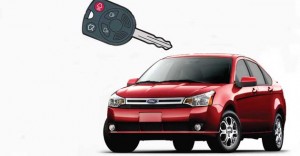Could a new General Motors technology put the carmaker’s OnStar division out of business?
A new “smart” key that will be introduced with the 2011 Buick LaCrosse is designed, among other things, to prevent accidental lock-outs, an unfortunately common occurrence and one of the most common reasons why owners of GM vehicles call OnStar, which can remotely unlock car doors for subscribers.
Automakers have come a long way from the days when a car key was little more than a ground sheet metal blank. The new GM technology, which uses a small, built-in wireless transmitter, is one of a growing number of systems that build special features into the key.
Many automakers now build in digitally coded resistors or other systems that ensure that the key being used to open a vehicle’s door or start the engine isn’t just an illegal copy.
Ford last year went a step further, introducing its MyKey system. The technology allows a parent, for example, to let a teenage child drive the family car – but ensure good driving behavior by setting a limit to the vehicle’s top speed or holding down the audio system’s volume.
There’s no reason a version of the MyKey system couldn’t also be used to limit the behavior of an older driver on a restricted license.
The new GM key, which will debut on the ’11 Buick LaCrosse and other General Motors models, serves a different purpose.
Like many new smart keys, it primarily functions wirelessly; you’re not required to actually insert a metal key into the lock cylinder. In this case you don’t even need to press an unlock button. The car and key talk to one another and if you’re in the immediate proximity, the vehicle’s doors will unlock, and you’ll then be able to hit the LaCrosse’s Start button.
The key “does a lot of thinking for you,” says Dave Proefke, the General Motors Technical Fellow who led the smart key development team. “It tries to determine your intended action and perform that action for you.”
Notably, the smart key can sense when a driver might inadvertently leave it behind. If so, it will sound a warning – and ensure that the vehicle is not accidentally locked with the key inside.
Proefke downplays the possibility that the digital signals sent by the Buick smart key might be captured by hackers. They are encrypted and changed with every use, he notes. But there’s little doubt the issue of wireless key security will continue to be a concern.
It wasn’t that long ago that many vehicles, particularly those from GM, required separate door and ignition keys. Today, a key and accompanying wireless fob is commonplace, though a growing number of makers have combined fob and key into a single unit. And going forward?
“In the future, the functions that are on the key fob could be built into smartphone apps,” the researcher suggests, or even downsized to the point that a car “key” could be worn as jewelry.


